Use of Hypothetical Data in
Machine Learning Trading Strategies
Disclosures: All investments carry risk. Information presented is for educational purposes only and does not intend to make an offer or solicitation for the sale or purchase of any specific securities, investments, or investment strategies. Investments involve risk and are never guaranteed. Be sure to first consult with a qualified financial adviser and/or tax professional before implementing any strategy discussed herein. Past performance is not indicative of future performance. Important information relating to qplum and its registration with the Securities and Exchange Commission (SEC), and the National Futures Association (NFA) is available here and here.
Ankit Awasthi
Quantitative Portfolio Manager
What will we cover today
Evolution in trading and machine learning
Data Augmentation in Deep Learning
How to generate hypothetical data for trading strategies ?
Stylized facts of time series of asset returns
Improving deep learning models for Finance
Future Testing Strategies
Ten Year Cycles of Innovations in Trading
Source : May 2017 Research, qplum
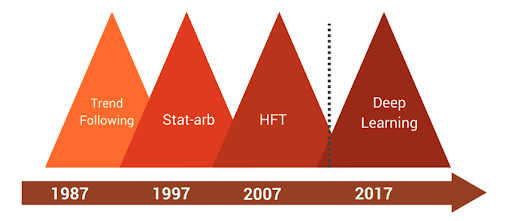
Evolution of Machine Learning

Tremendous Success of Deep Learning
Image
Text
Speech
Abundance of Data!



Deep learning scales with data

Source : Andrew Ng, Coursera Deep learning specialization
Data Augmentation for Deep Learning
Even more data!
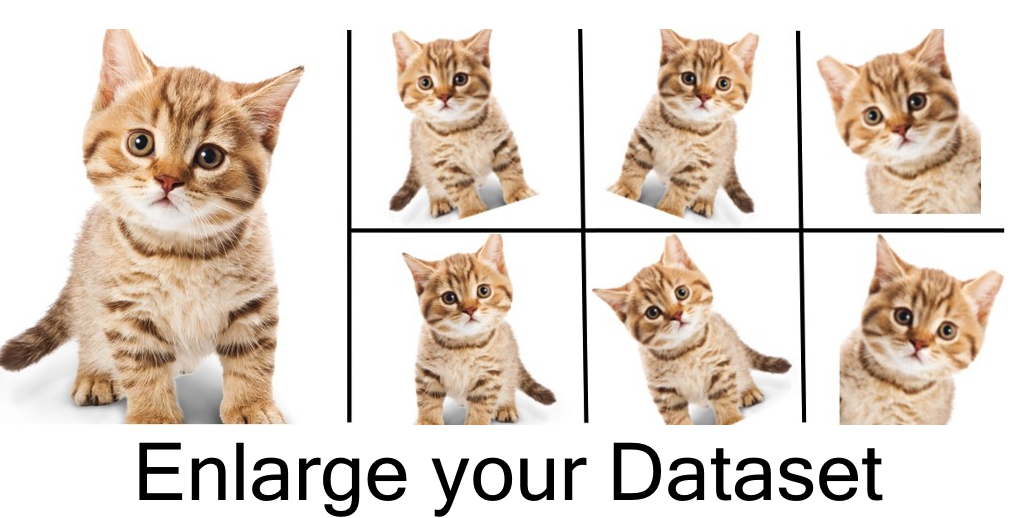
Source : Bharat Raj, Data Augmentation | How to use Deep Learning when you have Limited Data
Much harder in Finance!
Generating Hypothetical Data for Trading
-
Adding noise or transformations
- Data generated is similar to original so doesn't lead to great generalization
- Higher magnitude noise can distort properties of financial time series
-
Theoretical models
- Hard to estimate and sample from
- Multi-variate distributions are problematic
- Hard to account for all empirical properties of financial time series
-
Appropriating High Frequency Data
- Shows remarkable similarity to Daily Data
- Data acquisition is hard and costly
Using High Frequency Data as Daily Data
Step 1 : Generate 15-minute contiguous non-overlapping samples from high frequency tick-data
Step 2 : Compute Mean and Variance for daily returns as Daily_Mean and Daily_Variance
Step 3 : Transform High Frequency Data to have the mean as Daily_Mean and variance as Daily_Variance
Stylized Effects of Financial Time Series
Absence of Autocorrelations
Heavy Tails
Volatility Clustering
Leverage Effect
Cross Correlation vs Volatility
Absence of Autocorrelations
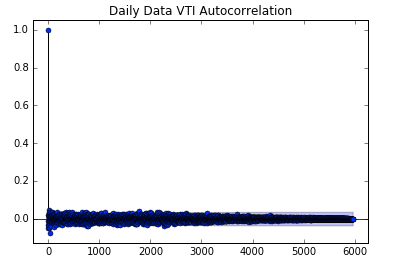

Autocorrelation of returns is low both in daily and high frequency data
Autocorrelation
Autocorrelation
Lag
Lag
Source : qplum Research
Heavy Tails
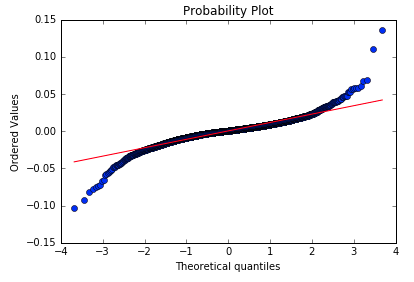
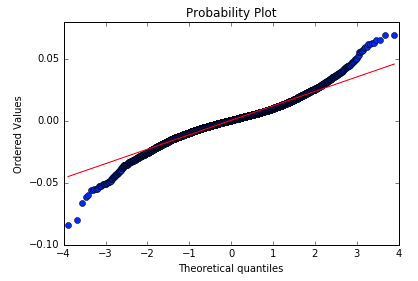
High frequency data exhibits divergence from normal similar to daily returns
The magnitude of the divergence, however, is much more pronounced for daily returns
Source : qplum Research
Volatility Clustering
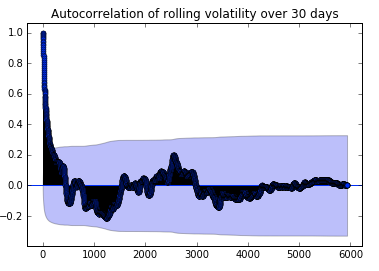
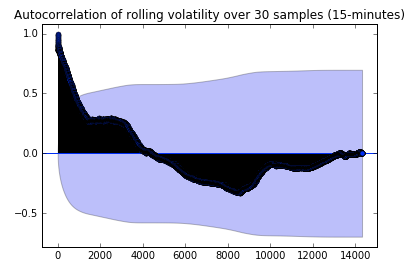
As opposed to returns, volatility of daily returns shows significant autocorrelation, which is retained in high frequency data as well
Autocorrelation
Autocorrelation
Lag
Lag
Source : qplum Research
Leverage Effect
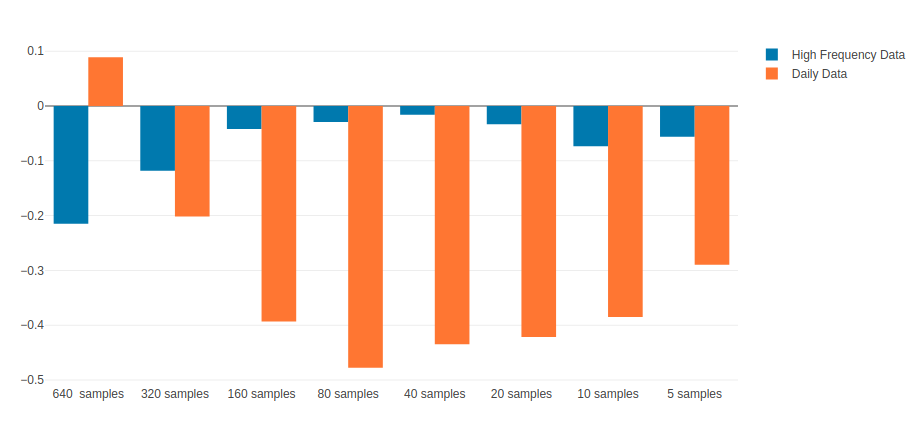
...refers to the observed tendency of an asset's volatility to be negatively correlated with the asset's returns
Correlation of volatility with returns for US Total Market Index (VTI)
Leverage effect is also exhibited by high frequency data but to a smaller extent
Correlation
Source : qplum Research
Cross-Correlation Vs Asset Volatility
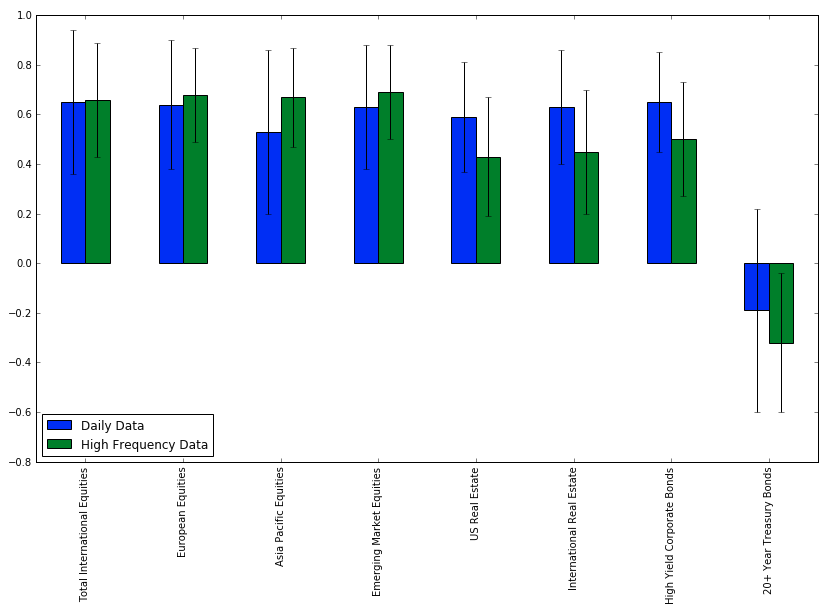
Mean of 30-day rolling correlation of different assets with US Total Stock Market (VTI)
Standard Deviation is shown as error bars.
Correlation ( Mean and Variance )
Source : qplum Research
Correlation increases with volatility
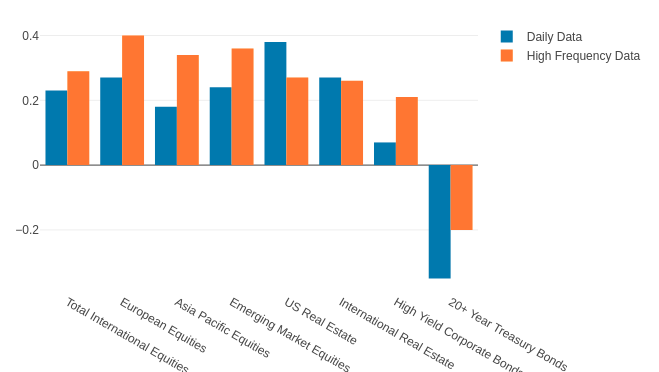
Correlation of 30-day rolling correlation of log returns of different assets vs US Total Stock Market against the volatility of US Total Stock Market.
Correlation
Source : qplum Research
A simple example - Autoencoders
Source : Arden Dertat, Applied Deep Learning
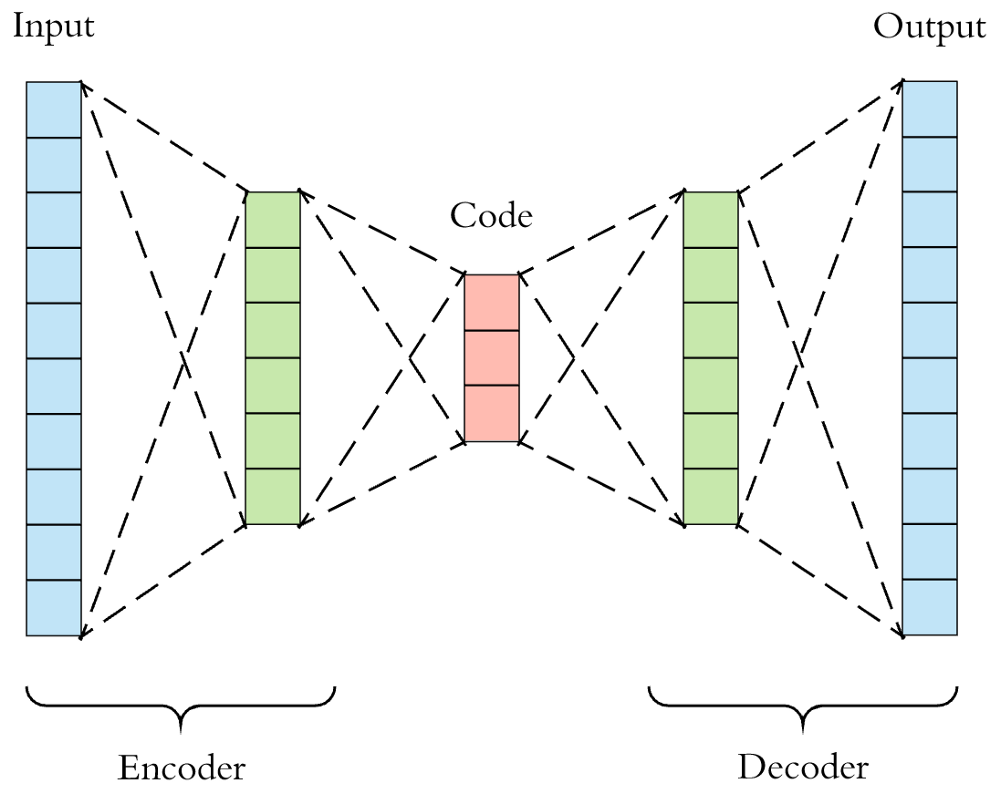
Feature Learning
Source : Arden Dertat, Applied Deep Learning
- Factorization of price-volume features across multiple securities
- Unsupervised - It is not used to predict returns, or maximize performance metric
- Information bottleneck forces the network to learn the most important factors
- Captures non-linearities across time and cross section of securities
Experiment
Daily EOD Data
Training
3000 pts
Validation
1000 pts
Testing
1000 pts
Large High Frequency Data Corpus
( 32000 pts )
Training
(High Frequency + Daily)
Validation
Out of Sample
Evaluation
Source : qplum Research
Model complexity alone doesn't help much!
One Hidden Layer : 62 -> 3 -> 62
Two Hidden Layers : 62 -> 10 -> 3 -> 10 -> 62
Three Hidden Layers : 62 -> 20 -> 10 -> 3 -> 10 -> 20 -> 62
Four Hidden Layers : 62 -> 100 -> 20 -> 10 -> 3 -> 10 -> 20 -> 100 -> 62
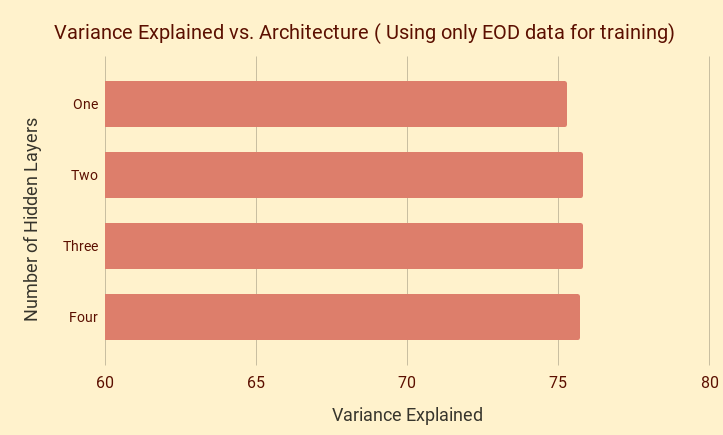
Source : qplum Research
However....more data does!
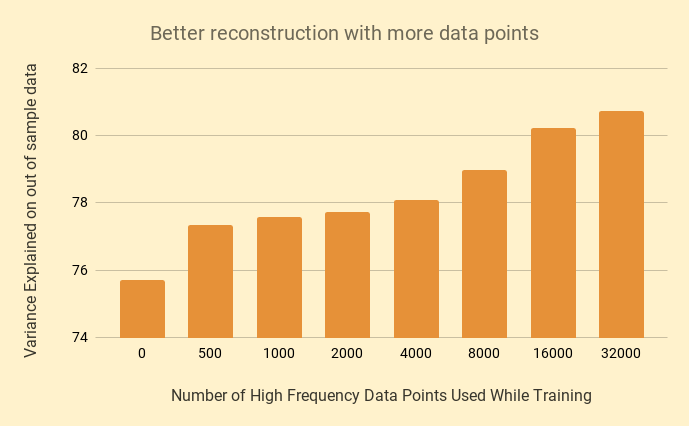
Architecture Used : 62 -> 100 -> 20 -> 10 -> 3 -> 10 -> 20 -> 100 -> 62
Source : qplum Research
Scenario Analysis
Helps to be data-driven with more data!
- Multiple instances of 'market crashes'
- Easy to find custom scenarios e.g., fixed income positively correlated to equities
- Periods of high or low divergence across different sectors in equity markets
- Multiple inflationary/deflationary periods as measured through commodity prices
Cross-Validating Hyper-parameters
Helps to be data-driven with more data!
-
Risk model parameters
- Sensitivity to lookback duration
- Combinations of different metrics like expected shortfall, current drawdown
-
Regularization constants
- Soft constraints in multi-objective portfolio optimization - constraining active risk and risk of the portfolio
-
Tax Optimization parameters
- Thresholds for deferring gains, booking losses as a function of volatility
Future Testing Strategies
" It is far better to forsee even without certainty than not to forsee at all " - Henri Poincare
-
Collect different capital market assumptions
- Qplum's Internal Expected Returns
- JP Morgan Capital Market Assumptions
- Research Affiliates Capital Market Assumptions
- ....
-
Transform high frequency data
- Set mean of returns such that annualized returns match the respective capital market assumptions
- Set variance of returns such that annualized volatility matches the respective capital market assumptions
- Evaluate performance of strategies under different capital market assumptions
Key Takeaways
Deep learning works best when you have lots of data
Adapting high frequency returns is one of the easiest ways of augmenting daily returns data
Hypothetical data can be used to stress test strategy performance
Hypothetical data can be used to develop better and more robust strategies
Questions?
contact@qplum.co
Disclosures: All investments carry risk. Information presented is for educational purposes only and does not intend to make an offer or solicitation for the sale or purchase of any specific securities, investments, or investment strategies. Investments involve risk and are never guaranteed. Be sure to first consult with a qualified financial adviser and/or tax professional before implementing any strategy discussed herein. Past performance is not indicative of future performance. Important information relating to qplum and its registration with the Securities and Exchange Commission (SEC), and the National Futures Association (NFA) is available here and here.